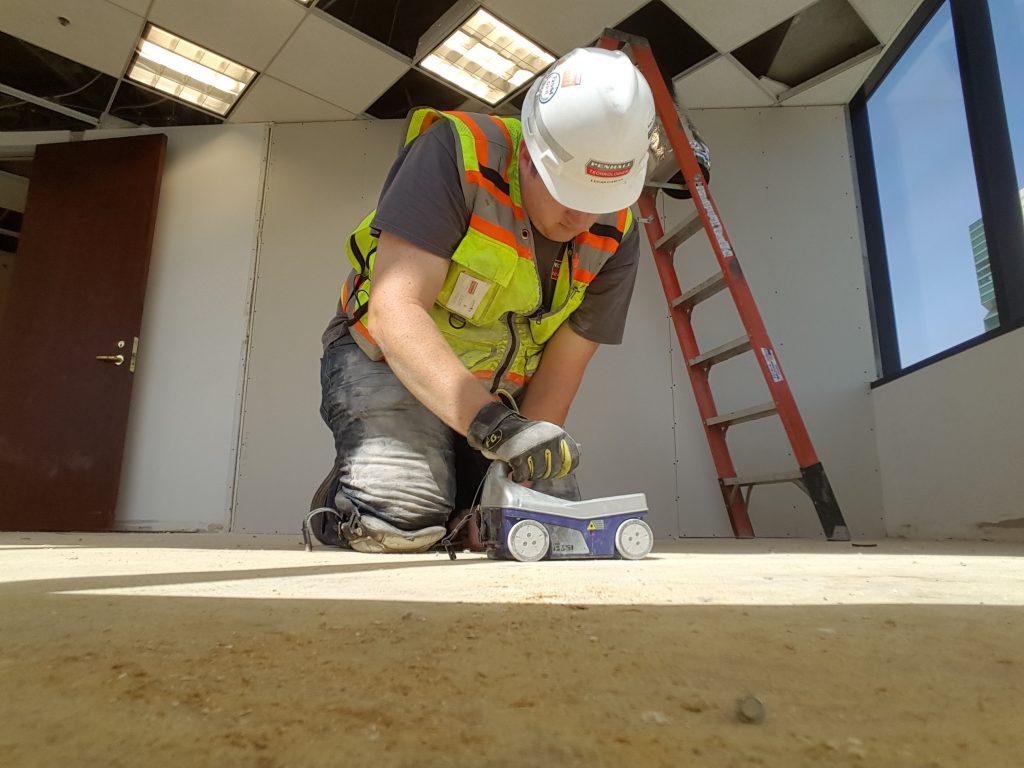Discover RainierGPR Service Areas for Reliable Concrete Scanning Solutions
Discover RainierGPR Service Areas for Reliable Concrete Scanning Solutions
Blog Article
Concrete Scanning: A Critical Step Towards Ensuring Architectural Honesty and Security
In the realm of building and construction and infrastructure maintenance, the significance of concrete scanning can not be overstated. By employing innovative modern technology and methods, concrete scanning offers as a pivotal tool in ensuring that the honesty and safety and security of structures and bridges are supported to the highest possible standards.
Importance of Concrete Scanning
Concrete scanning plays a vital duty in making certain the structural integrity and safety of structures and facilities jobs. By utilizing advanced innovations such as ground-penetrating radar (GPR) and electro-magnetic induction, specialists can non-destructively examine concrete frameworks to find potential defects, voids, ingrained objects, and support design. This procedure allows early discovery of anomalies that can jeopardize the security of a structure, protecting against expensive damages and making sure the safety of residents.
Prior to drilling, reducing, or coring into concrete, scanning helps recognize the precise locations of rebar, post-tension cords, and various other ingrained components, reducing the risk of unexpected hits that might lead to architectural weak points. In addition, concrete scanning help in top quality control by validating the thickness of concrete covers and finding any kind of disparities that might affect the general toughness of the framework.
Innovation for Concrete Examination

Benefits of Early Detection
Timely discovery of structural problems can dramatically mitigate risks and guarantee the long life of building and construction tasks. By recognizing prospective problems early on in the building procedure, stakeholders can take aggressive actions to attend to problems prior to they rise into bigger and more expensive issues. Among the crucial benefits of early discovery is the prevention of architectural failures, which can position major safety and security risks and cause task hold-ups and financial losses.
In addition, early detection allows for prompt repair services and upkeep, which can assist expand the lifespan of the framework. By resolving issues quickly, construction groups can avoid expensive fixings or perhaps the need for early replacement of architectural components. This positive strategy not only conserves time and money however also enhances the like this general security and durability of the construction project.
Additionally, very early detection can enhance project preparation and decision-making by giving stakeholders with useful understandings into the condition of the structure. Armed with this information, project supervisors can make educated selections relating to building products, timelines, and techniques, bring about a lot more reliable and successful job end results.
Guaranteeing Structural Stability
Making certain the structural security of a building and construction task is paramount to its security and longevity. Concrete scanning plays an important duty in ensuring architectural security by discovering possible concerns such as gaps, get redirected here delamination, or reinforcement deterioration that can compromise the stability of the framework over time.
By utilizing advanced scanning innovations like ground-penetrating radar (GPR) and electro-magnetic induction, construction professionals can non-invasively check concrete structures to recognize locations of problem below the surface area. This positive strategy permits the early discovery of weaknesses or defects, allowing punctual repair services or support to stop structural failures.
Normal concrete scanning during various construction phases and throughout the life process of a framework can help preserve its security, reduce threats, and ensure the safety and security of residents. By prioritizing structural security through concrete scanning, construction tasks can enhance their resilience and longevity, inevitably adding to greater safety and security and durability.

Stopping Vital Failures
To safeguard versus devastating events, careful tracking and positive maintenance are crucial visit this site in avoiding critical failings within structural structures. Identifying prospective concerns prior to they intensify is essential to protecting against architectural failings. Executing routine inspections, such as concrete scanning, can reveal concealed defects like gaps, splits, or corrosion that can compromise the honesty of a structure. By using sophisticated scanning innovations like Ground Permeating Radar (GPR) or Concrete X-ray, designers can non-destructively analyze the condition of concrete and recognize weak points that call for support or repair service - RainierGPR Service Areas.

Conclusion
To conclude, concrete scanning plays an important role in guaranteeing architectural stability and safety by utilizing sophisticated technology for very early discovery of prospective problems. This proactive approach helps prevent critical failings and ensures the stability of structures. It is important to prioritize concrete examination as a common method to secure the durability and security of structures and facilities.
Concrete scanning plays a crucial duty in making certain the architectural integrity and safety of buildings and framework tasks. In addition, concrete scanning help in high quality control by validating the density of concrete covers and spotting any type of disparities that may influence the general durability of the framework. Concrete scanning plays an essential duty in ensuring structural security by finding potential issues such as voids, delamination, or support deterioration that can compromise the integrity of the structure over time.

In final thought, concrete scanning plays an important role in ensuring structural stability and safety by utilizing innovative innovation for very early discovery of possible concerns.
Report this page